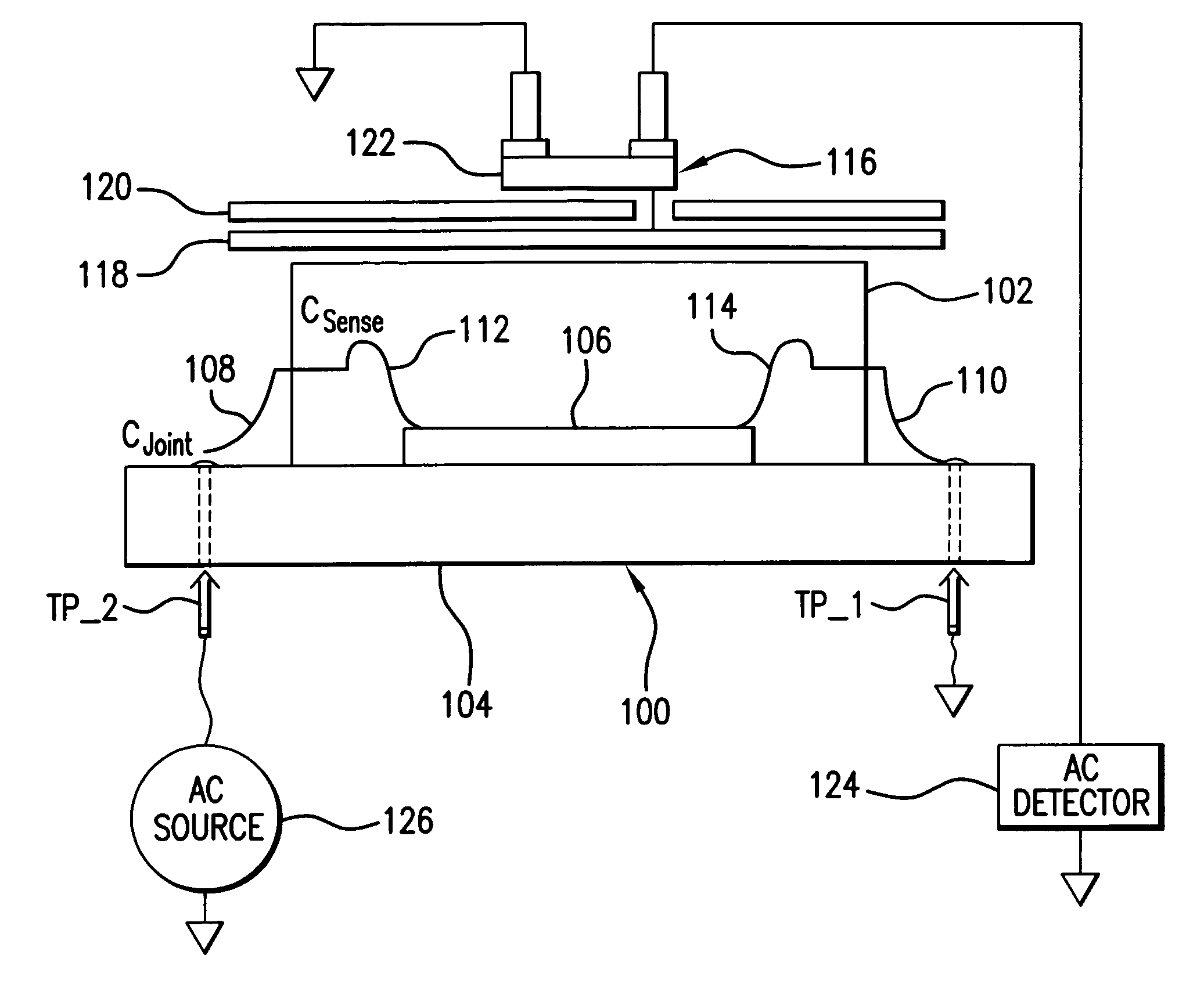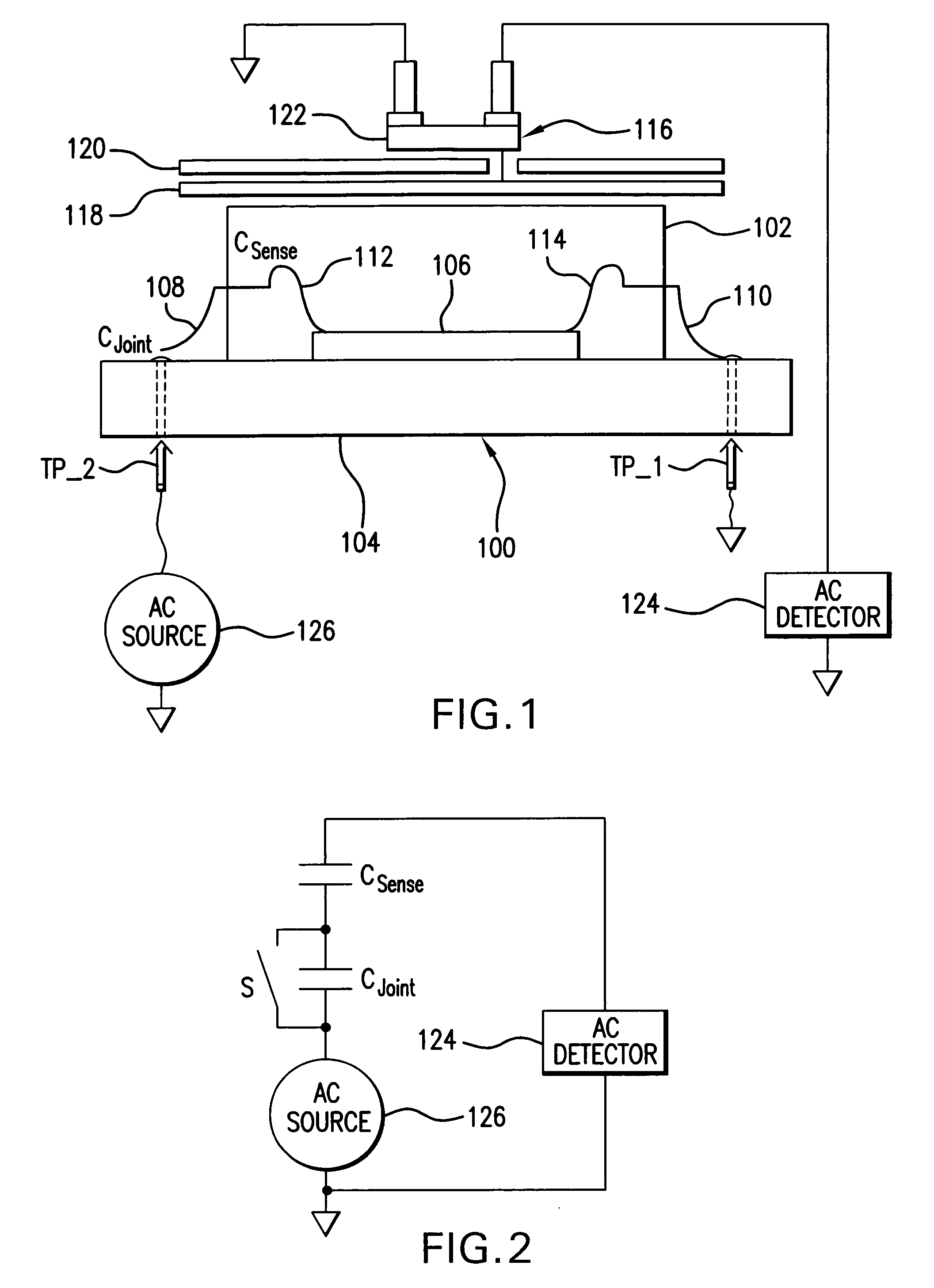Test structure embedded in a shipping and handling cover for integrated circuit sockets and method for testing integrated circuit sockets and circuit assemblies utilizing same
a technology of integrated circuit sockets and testing structures, which is applied in the direction of electrical connection testing, measurement devices, instruments, etc., can solve the problems of “open” defects, interfere with the success of capacitive lead-frame testing, and lack of capacitive coupling between an ic lead-frame and a tester's sense pla
- Summary
- Abstract
- Description
- Claims
- Application Information
AI Technical Summary
Benefits of technology
Problems solved by technology
Method used
Image
Examples
Embodiment Construction
[0028] Some complex integrated circuits are not directly mounted on boards, but are intended to reside in sockets that permit them to be added or replaced after a board is manufactured. An exemplary IC mounted to a board via a socket connector is illustrated in FIGS. 3 and 4, in which an IC 10 is secured in a socket base 12 by means on a lid or clamp plate 14 and a clamp or lock 16. The IC 10 is clamped or locked into place within the socket 12 by a clamp plate 14, which depresses the IC 10 onto a field of contact pin spring fingers 28 that map one-to-one to solder balls (or pins) 24 on the bottom of the socket 12, as shown in FIG. 3. The IC 10 may make electrical contact with a board (not shown) via hundreds or thousands of delicate pin spring fingers 28. The IC 10 may have an array of pads, pins, solder balls or solder columns 22 that come into physical and electrical contact with individual pin spring fingers 28, which map to an array of pads, pins, solder balls or solder columns...
PUM
 Login to View More
Login to View More Abstract
Description
Claims
Application Information
 Login to View More
Login to View More - R&D Engineer
- R&D Manager
- IP Professional
- Industry Leading Data Capabilities
- Powerful AI technology
- Patent DNA Extraction
Browse by: Latest US Patents, China's latest patents, Technical Efficacy Thesaurus, Application Domain, Technology Topic, Popular Technical Reports.
© 2024 PatSnap. All rights reserved.Legal|Privacy policy|Modern Slavery Act Transparency Statement|Sitemap|About US| Contact US: help@patsnap.com










